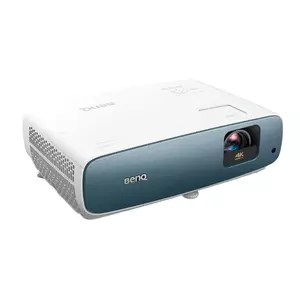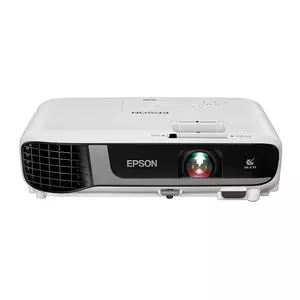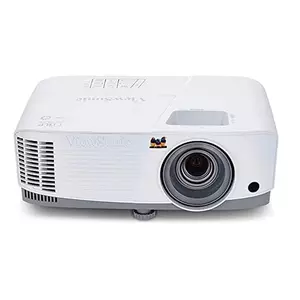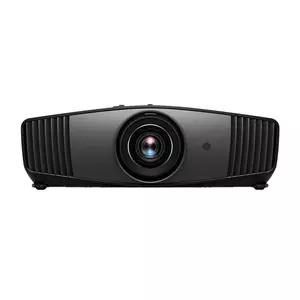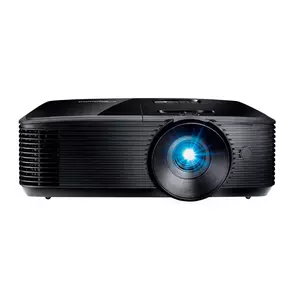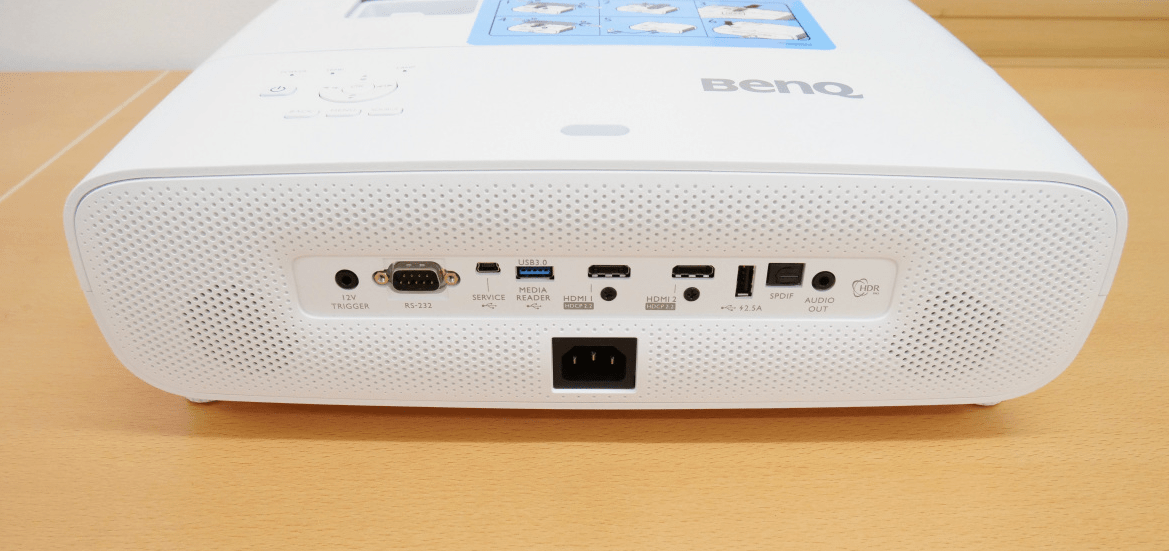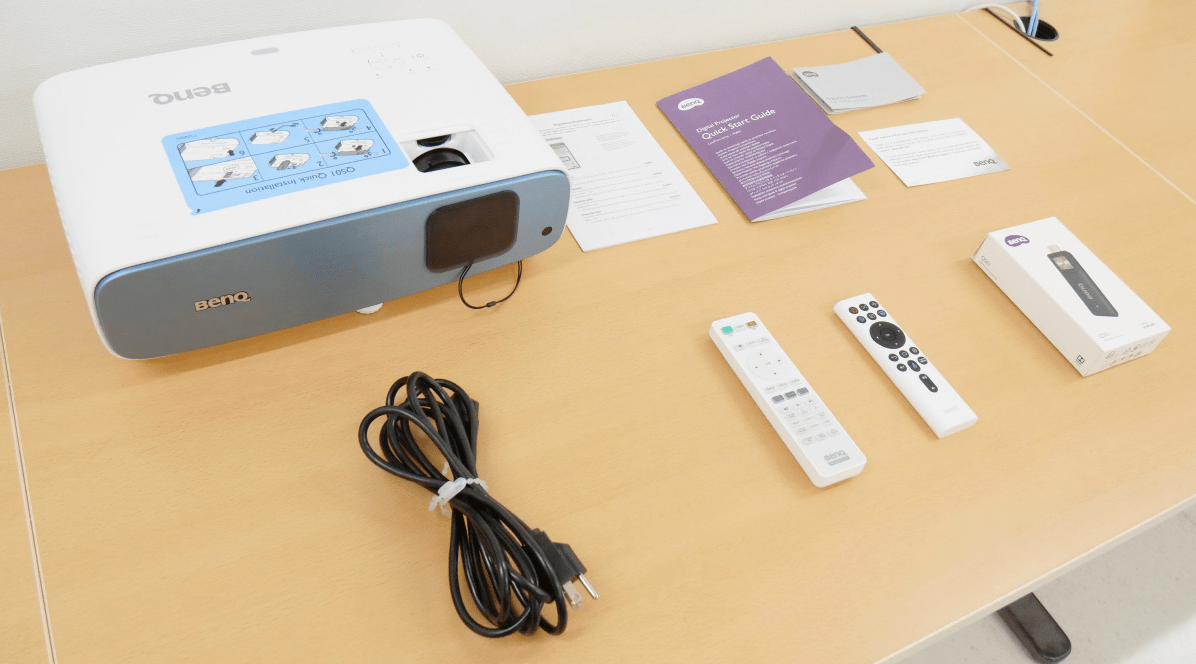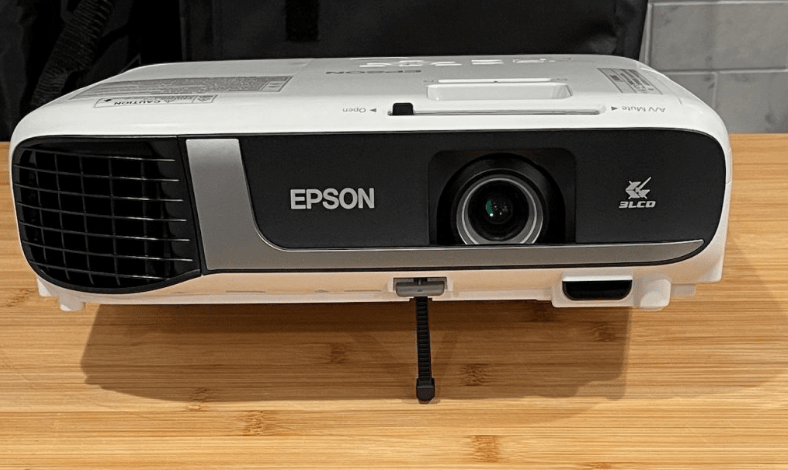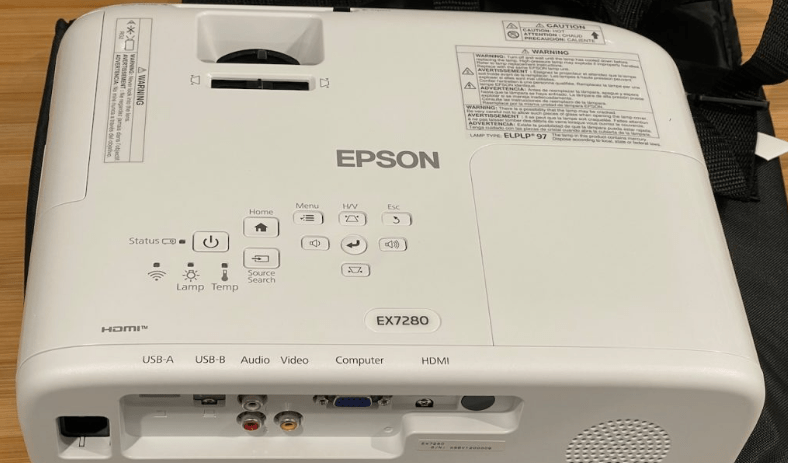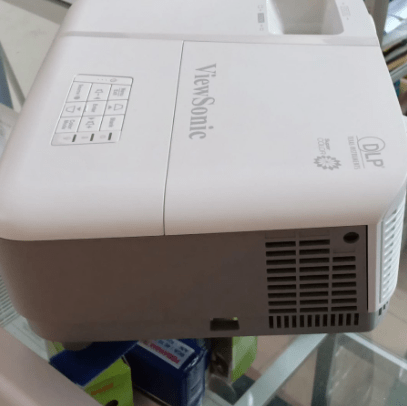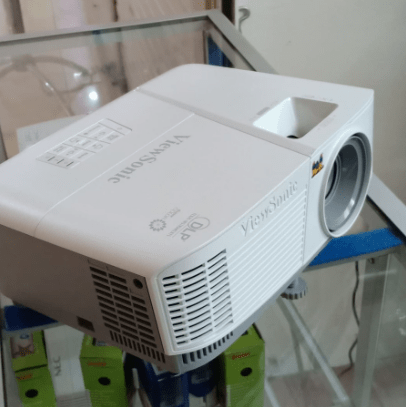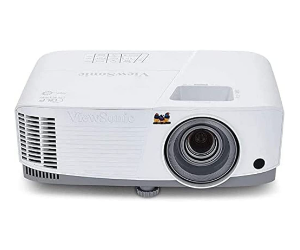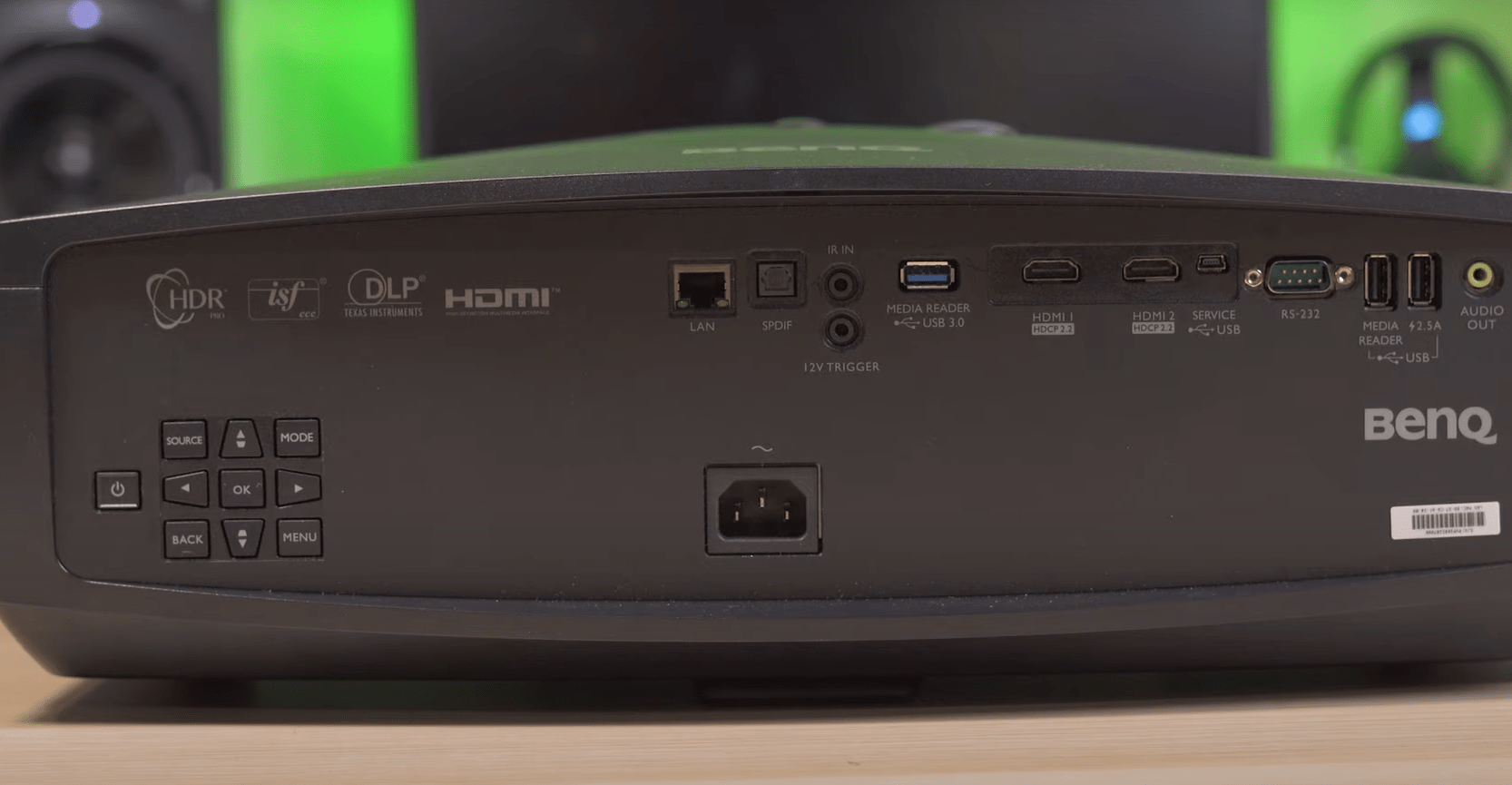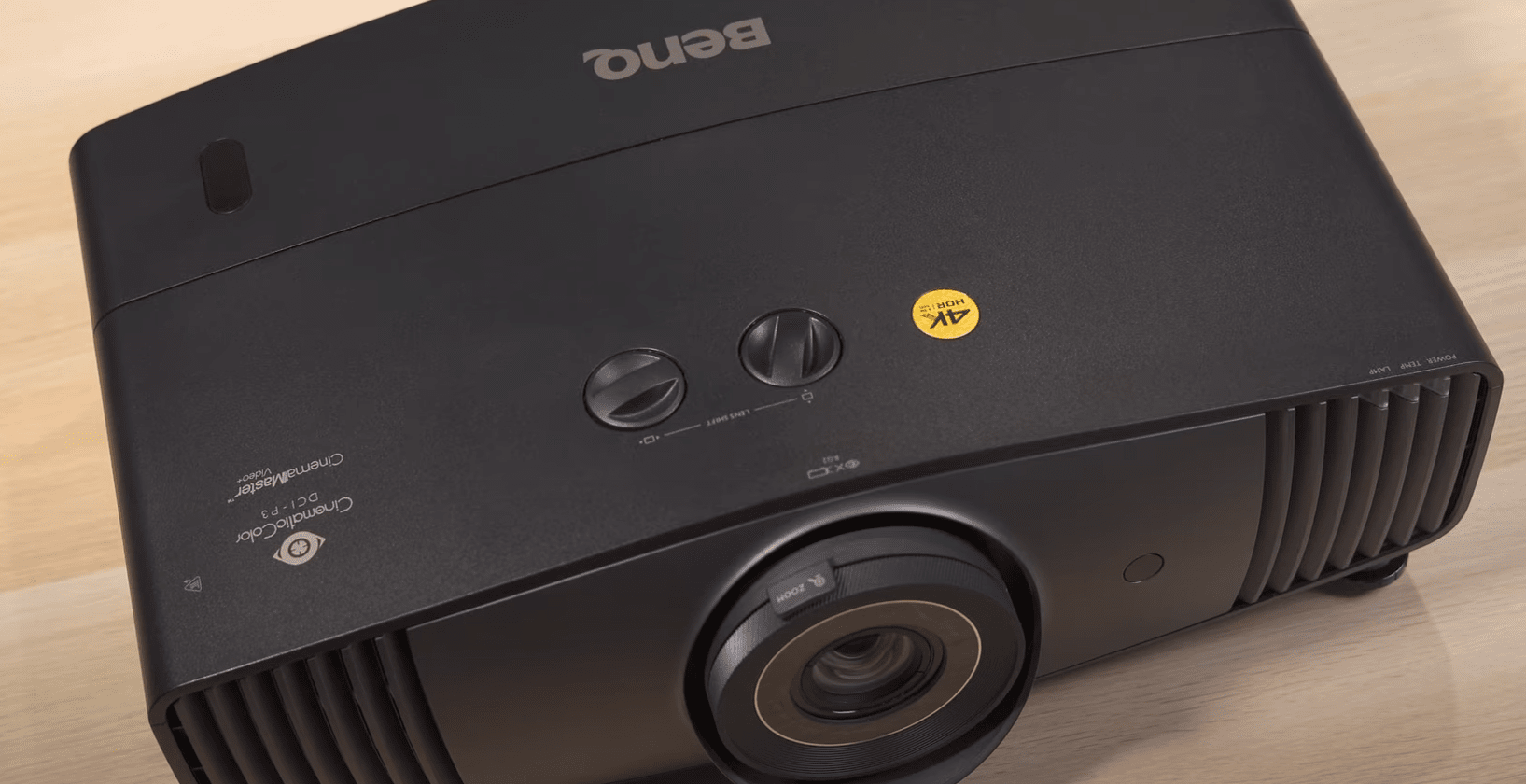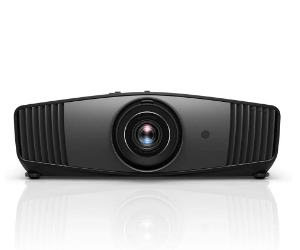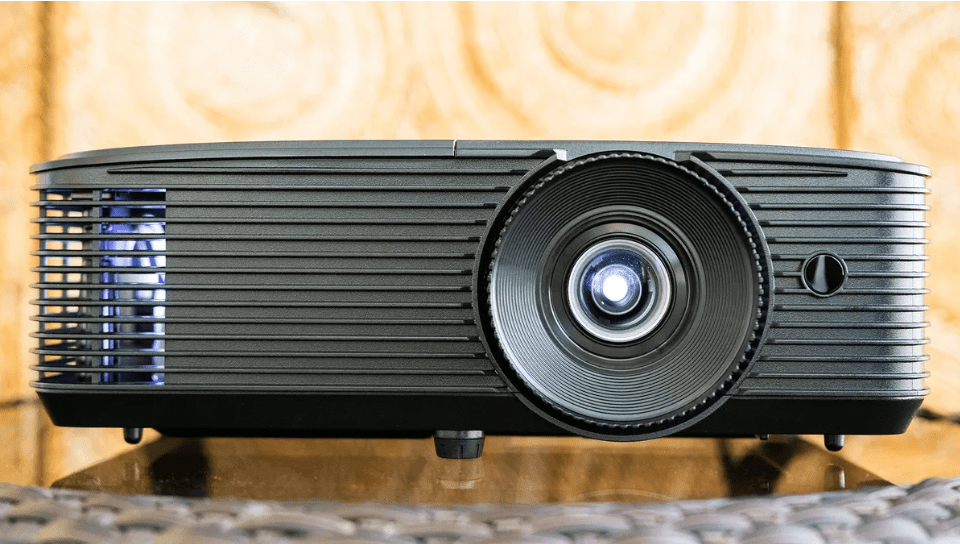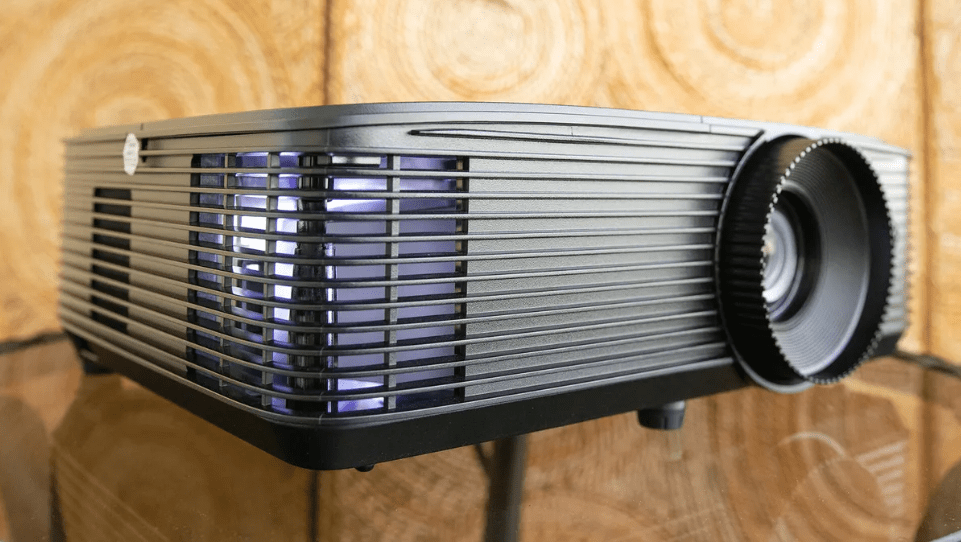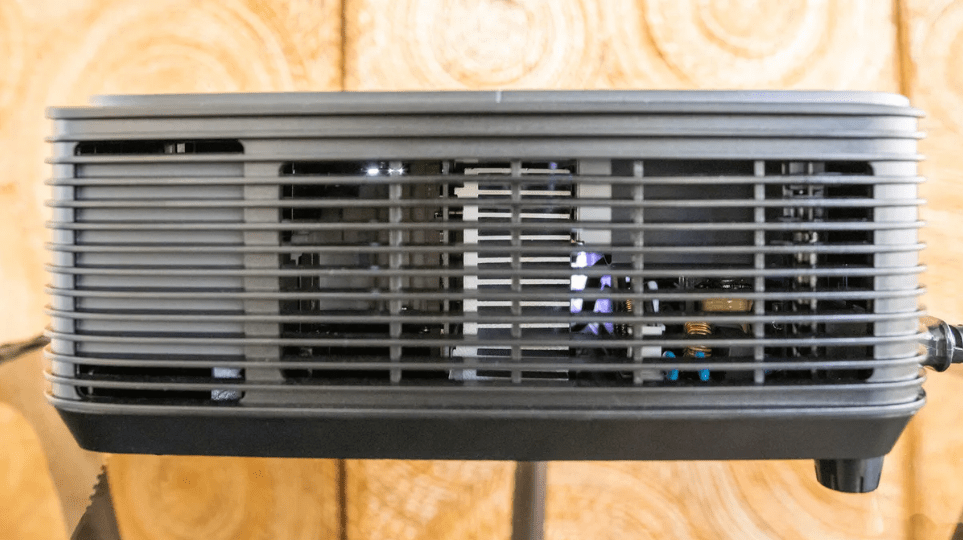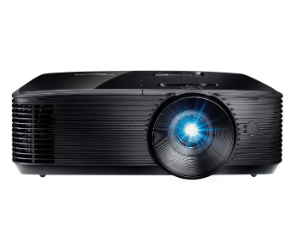At gagadget.com, your trust is our priority. We follow strict quality standards in our research, tests, and analysis of video projectors, to give you the best experience. Learn more
Best Projector for Daylight Viewing
Hello there, and a warm welcome as we wrap up 2025! Are you struggling to find the perfect projector that will deliver clear, vibrant images even in daylight? Well, you're in the right place!
Projectors are a fantastic piece of technology that can create an immersive viewing experience on a grand scale, much larger than any TV screen. However, choosing the right one for daylight viewing can be a bit tricky. That's where this article comes in handy!
I've dedicated over 390 hours diving deep into both popular and hidden gem projector models to help answer this burning question: 'What is the best projector for daytime viewing?' This is not about the most affordable or the most recommended brand, but about finding a projector that truly shines in the daylight.

Daylight viewing can be a tough nut to crack. You'll need a projector that not only has high light output (measured in lumens or lux) but also a fantastic contrast ratio to compete with the bright daytime. Remember, the better these numbers, the more stunning your visuals will be.
Of course, it always helps to draw the curtains or roll down the blinds for a better viewing experience. But for those times when it's not possible, you'll need a projector that's more than up to the task. I'm talking about a high output projector, ideally with an output over 3,000 lumens and a contrast ratio of around 6,000:1 or higher.
While the resolution - HD, 4K, or otherwise is certainly important, the primary focus should be its daylight viewing capability.
In the following sections, I'll delve into why these factors are so critical and review five top-notch projectors that excel in daytime conditions. But for now, let's dive straight into the models that won us over. Stick around, and together we'll find the perfect projector for your daylight viewing needs!
Best Projectors for Daytime Viewing in 2025
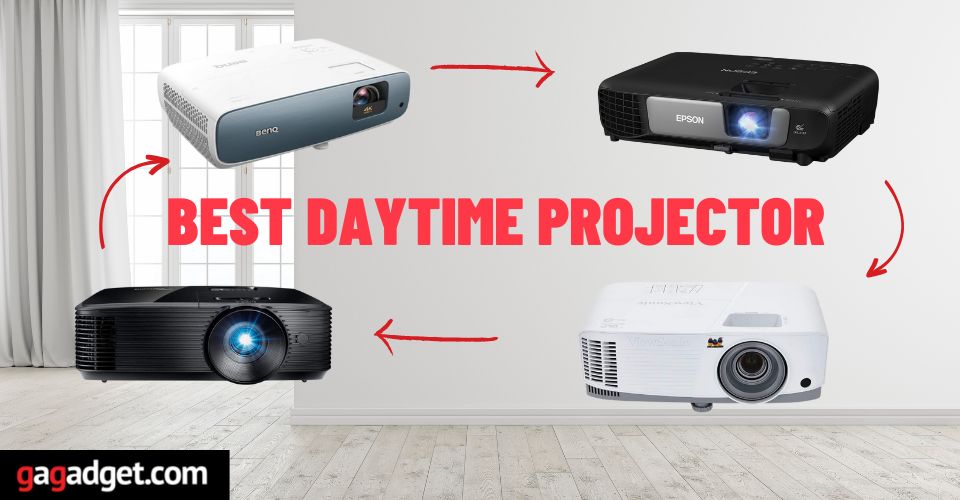
If you're on the hunt for a projector that stands up to bright environments, you're in luck - I've got just the ticket.
My top trio of choices are champions in this arena. They promise to deliver exceptional image quality, unfazed by whatever lighting conditions you throw at them!
| Model | Description |
|---|---|
| ViewSonic PA503X | The ViewSonic PA503X projector is a standout choice for those seeking top-notch performance in daylight conditions at an affordable price. It has a high lumens output that ensures bright, vivid images, even in well-lit environments. Despite its high-quality features and performance, the PA503X comes at a cost-effective price point, making it an excellent choice for budget-conscious consumers who don't want to compromise on daylight viewing quality. |
| BenQ TK850i | The BenQ TK850i projector is a premium device that delivers breath-taking 4K visuals. Its HDR capabilities ensure incredibly realistic and intricate images, regardless of ambient light. This makes it a top-tier choice for brightly lit settings. In addition to its impressive performance, it features user-friendly options like Airplay and Chromecast casting. As an added bonus, the BenQ TK850i is backed by a leading industry warranty. Got a bigger budget? The BenQ HT5550 is worth a look. |
| Epson Pro EX7280 | If you're seeking a professional-grade projector that showcases vibrant and true-to-life colors, even in brightly lit spaces, the Epson Pro EX7280 is a solid alternative pick. With 4000 lumens of equal color and white brightness, it's ideal for HD presentations and video projections. The projector is also compatible with MHL-enabled devices, offering mirroring and charging capabilities, making it easy to use with your smartphone or tablet. |
We may earn a small commission if you buy via our links - it helps keep gagadget.com running.
Alright, now that we've covered that, let's dive into the nuts and bolts of how projectors work for daylight viewing. Shall we?
Understanding Daylight Projection and Human Vision
On your quest for the best daylight projector, it's crucial to understand a bit of the science behind it all. You see, using a projector in daylight involves some clever tricks to 'fool' the human visual system (HVS).
Contrary to popular belief, our eyes don't function like cameras. When using a projector in daylight, your video scenes might range from deep blacks to bright whites, all displaying an array of colors, amidst the ambient light.
Sure, you could just draw the curtains or close the shutters to improve the viewing quality, but let's assume that's not always possible or desirable.
So, finding the answer to "what is the best projector for daylight viewing" involves diving a little deeper into the science of it all. It's a fascinating journey, and I promise it's worth your time. Let's get started.
Projecting in daylight presents a duo of challenges
Projecting in daylight conditions presents two intriguing challenges:
- The first challenge is all about illusion. The projector must convince you and your Human Visual System (HVS) that the white projection screen is actually black when displaying black content. Remember, in a daylight room, the screen will naturally appear white due to the ambient light. And, no, simply projecting onto a painted white wall won't do the trick. That leads us down the fascinating path of HVS and relative contrast perception.
- The second challenge is color accuracy. The projector must make the colors on the screen appear 'correct', even though the hues may differ from real life. For instance, the projected blue sky might not match the actual sky you see out your window. This deals with the complexities of color perception in the HVS.
In a nutshell, projecting in daylight requires overcoming two primary hurdles: convincing the viewer's eyes to see black on a daylight-illuminated screen, and ensuring that displayed colors appear authentic, despite potential contrasts with real-world hues.
Color constancy
First, let's delve into the concept of contrast. For this, I'm going to take you through an intriguing optical illusion crafted by Edward H. Adelson to perfectly demonstrate this idea.
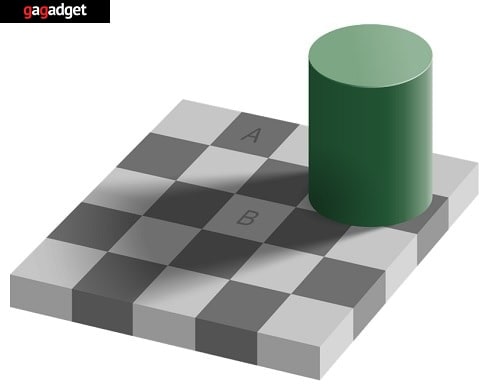
Have a gander at the checkerboard and the green cylinder presented above. Notice the squares labelled 'a' and 'b'. They certainly appear to be completely different shades of grey, don't they? It seems like a no-brainer.
Now, shift your attention to the checkerboard and green cylinder below. Interestingly, it's the identical image with the exact same original grey shades as the image above in both squares 'a' and 'b'.
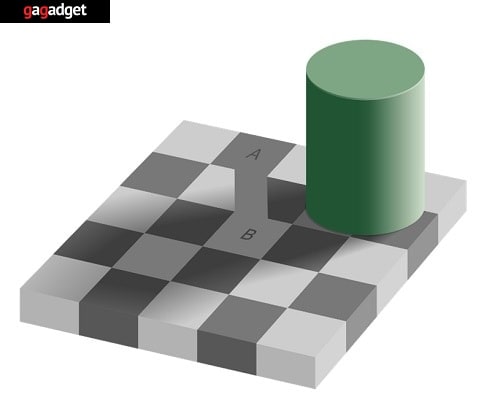
What you're witnessing is the intriguing phenomenon of "relative contrast perception". Surprisingly, squares 'a' and 'b' in the original image are the exact same shade. Your brain, playing tricks on you, perceives them differently due to its natural instinct to interpret contrasts based on context.
The seeming shadow from the cylinder makes square 'b' appear darker. This brings us to an interesting point for digital projectors: for authentic 'black', the projector must emit no light, preventing any misleading signals for the human visual system (HVS). Similarly, for peak white, particularly in daylight, the brightness must be cranked up to avoid confusion for the viewers.
Here's a fun fact: color, as we know it, doesn't actually exist. Our world is essentially monochrome; many animals lack or have very different color perception compared to us.
Our HVS "creates" colors based on evolutionary benefits - helping our ancestors avoid predators, pick edible berries over poisonous ones, and so on. We perceive color relative to nearby colors, our past experiences, and our expectations.
Take a look at the Rubik’s cube below:

The square smack dab in the middle of the cube's face appears yellow, doesn't it? And the square centered on the top of the cube looks brown, correct?
Convinced, are you? Now take another look at the image below:
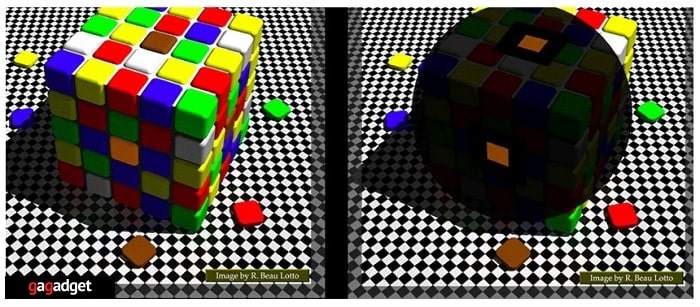
Surprise, surprise! They're actually the same shade of muted orange, as the image on the right demonstrates. This illusion is a testament to how our perception of color hinges on comparison.
In this scenario, the colored squares' appearance changes due to their neighboring squares and the assumed lighting conditions. This is also a nod towards color constancy, a topic we'll get to shortly.
This implies that your projector needs to be attuned to indoor color perceptions, which differ from outdoor. Whether it's intended for use in bright or dim rooms also matters. Your projector should allow adjustments for color temperature. Cinemas, maintaining consistent conditions, don't face this issue. But for home use, it makes a significant difference.
While discussing the ideal projector for daylight viewing, color constancy is a vital point. Simply put, as we transition between indoor and outdoor settings, bright sunlight to dim interiors, or switch on a light in a dark room, our perception of colors 'resets'.
You might recall the viral internet debate over the color of a certain dress a few years back. People couldn't agree on the colors they saw.
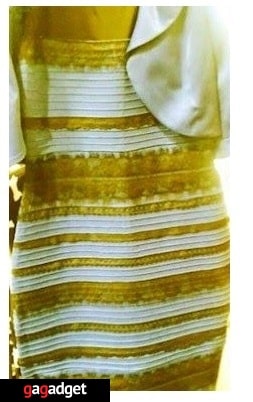
In reality, everyone had a valid point. The color perceived is influenced by both the colors one has been observing prior and the surrounding lighting conditions while gazing at the dress.
Thus, bright sunlight would yield a particular set of colors, fluorescent light would present another, and candlelight would showcase a different spectrum altogether.
Therefore, any of these three interpretations could be what an individual believed they 'saw'.
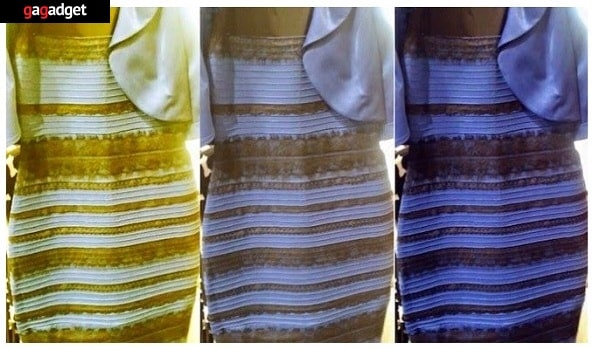
Color perception is subjective and can be influenced by various factors, including surrounding colors and lighting conditions. The way we perceive colors can change depending on the context in which we view them.
Daylight Use: Key Factors to Consider
In this table, I have gathered all the key points that I believe are crucial to consider when buying a projector for use in daylight and bright light situations.
| Factors | Summary |
|---|---|
| Brightness (Lumens) | Minimum of 2,500 lumens for daylight use. For larger venues or very bright environments, consider 4,000+ lumens. |
| Contrast Ratio | Aim for a contrast ratio of 15,000:1 or higher for better image quality in well-lit spaces. |
| Resolution | 1080p (Full HD) or 4K (Ultra HD) resolution recommended for clearer images. |
| Projection Technology | DLP and 3LCD both suitable for daylight use. DLP has higher contrast ratios, while 3LCD offers better color accuracy. |
| Ambient Light Rejection (ALR) Screen | An ALR screen reduces glare and improves image quality in bright environments. Highly recommended for daylight use. |
| Throw Ratio & Distance | Short-throw projectors for small spaces, long-throw projectors for larger venues. Choose a suitable throw ratio for your space and screen size. |
| Connectivity Options | Ensure your projector has necessary ports (HDMI, VGA, USB, etc.) to connect with your devices. |
| Lamp Life & Replacement Costs | Consider projectors with longer lamp life and affordable replacement lamps for lower maintenance costs. |
| Warranty & Support | Check warranty policies and customer support options to ensure a hassle-free experience. |
Now, let's closely examine our five top projector candidates for daylight viewing.
Best Daytime Projectors - TOP 5
In case you're short on time, here's our all-inclusive lineup of daylight projectors for every wallet size.
- True 4K UHD resolution with 8.3 million pixels
- High brightness of over 3000 lumens, perfect
- Supports HDR-PRO
- Wide color gamut (98% Rec.709) delivering accurate
- Easy setup with lens shift and keystone correction
- 4,000 lumens for a clear image even in well-lit rooms
- WXGA resolution for sharp text and images
- True 3-Chip 3LCD technology
- 1.2x optical zoom, horizontal slider, and auto correction
- Bright 3800 lumens ideal for well-lit rooms
- Versatile connectivity options
- 1.1x optical zoom and 40-degree keystone correction
- Long lamp life up to 15,000 hours in SuperEco Mode
- DLP technology for clear image quality
- True 4K UHD resolution and wide color gamut
- HDR-PRO technology with 100,000:1 contrast
- Installation flexibility with 2D lens shift and 1.6x zoom
- Optimized movie modes for cinematic experience
- Clear 1080p HD, 3600 lumens brightness
- Enhanced gaming features
- Dynamic Black technology for depth and contrast
- HDMI-CEC for unified control
Best Projector that Works in Daylight: Comparison
Step into the Sunlight: Join me as I unveil the crème de la crème of projectors for daylight use - My Top 5 Picks for an Immersive Sunlit Experience!
| Model: | Brightness | Contrast Ratio | Resolution |
|---|---|---|---|
| BenQ TK850i | 3000 | 30,000:1 | 3840x2160 |
| Epson Pro EX7280 | 4000 | 16,000:1 | 1280x800 |
| ViewSonic PA503X | 3800 | 22,000:1 | 1024x768 |
| BenQ HT5550 | 1800 | 100,000:1 | 3840x2160 |
| Optoma HD146X | 3600 | 25,000:1 | 1920x1080 |
Time to dig deeper! Let's dive into the nitty-gritty of each projector on my list and discover what makes them shine in the daylight!
BenQ TK850i 4K HDR-PRO Projector for Daylight Review
Best Overall Model
After putting BenQ TK850i projector to the test, I was bowled over by its superior capabilities, especially its standout performance in daylight conditions. This top-notch device takes 4K resolution image quality and elevates it to a whole new level, making it an exceptional choice for both home entertainment and business presentations.
When I trialed this product, I was impressed by its HDR10 and HLG support. The TK850i doesn't merely project images – it breathes life into them. By delivering radiant colors and enhanced contrast, it takes your favorite movies and TV shows and imbues them with a realism that needs to be seen to be believed.
One feature that left an indelible mark during my trial was the TK850i's high visual brightness, surpassing 3000 lumens. This ensures a crystal-clear and bright image, even in ambient daylight conditions. It's a real game-changer for those who enjoy the flexibility of viewing their content in various light settings.
The ease of use of the TK850i also warrants a special mention. With features like AirPlay and Chromecast, casting content from your smartphone or tablet is as simple as pie, with no need for extra apps. This easy setup and operation process resonated with me, as I'm sure it will with those who value convenience.
Pros:
- True 4K UHD resolution with 8.3 million pixels for sharp and detailed image quality;
- High brightness of over 3000 lumens, perfect for well-lit environments;
- Supports HDR-PRO for realistic and vibrant images with enhanced contrast and brightness;
- Wide color gamut (98% Rec.709) delivering accurate and vivid colors;
- Easy setup with lens shift and keystone correction;
- User-friendly interface with casting capabilities and a dual-function remote for Android TV and projector;
- Industry-leading 3-year warranty covering parts and labor.
Cons:
- No native Netflix support – requires casting via laptop or HDMI cable connection;
- Some reported issues with remote control functionality;
- Lacks legacy inputs and regular sound output jack, a potential limitation for certain setups.
Lastly, the TK850i projector comes with an industry-leading warranty, a testament to the manufacturer's confidence in its durability. This provides the assurance that your investment will endure over time.
Summary: In sum, after testing and trialing the BenQ TK850i, I can confidently say that it's more than just a projector. With its daylight-friendly high brightness, 4K resolution, vibrant colors, user-friendly features, and robust warranty, it's a solid investment in superior viewing experiences.
- 4K UHD Resolution, 3,000lm brightness
- Remote controls both Android TV and projector
- Automatic zoom and focus, Auto vertical keystone function
Epson Pro EX7280 Wireless HDMI Projector for Daytime Review
Great Alternative Model
As indicated by my tests, Epson Pro EX7280 projector is a real standout, especially in daytime conditions. It boasts an impressive 4,000 lumens of color and white brightness, delivering vibrant and luminous visuals that hold up remarkably well in well-lit environments.
Its WXGA resolution further ensures that images and text are displayed sharp and detailed, making it a stellar choice for professional presentations, videos, and diverse multimedia content.
Equipped with the true 3-Chip 3LCD technology, this projector successfully avoids the typical issues such as "rainbowing" and guarantees consistent color brightness. This leads to outstanding color accuracy that enhances the viewing experience.
Pros:
- Bright & Vivid: 4,000 lumens for a clear image even in well-lit rooms;
- High Quality: WXGA resolution for sharp text and images;
- Color Accuracy: True 3-Chip 3LCD technology;
- Easy Setup: with 1.2x optical zoom, horizontal slider, and auto correction.
Cons:
- Fan Noise: Can be noticeable in quiet settings;
- Audio Quality: Built-in speaker lacks depth and volume;
- Bulky: Less portable due to size and weight.
Based on my observations, the projector also offers a host of versatile connectivity options, including an HDMI port. This feature facilitates easy connections with various streaming devices, thereby expanding your entertainment possibilities.
The setup process for the Epson Pro EX7280 projector is a walk in the park, thanks to features like 1.2x optical zoom, horizontal slider, and auto vertical correction. Adjusting the image to the desired alignment and size is a breeze.
Summary: My tests and observations lead me to highly recommend the Epson Pro EX7280 projector. It perfectly combines exceptional brightness, sharp image quality, versatile connectivity, and user-friendly setup. Its superior performance in daylight conditions makes it a top pick for both professional and home entertainment uses.
- 4,000 lumens brightness, WXGA resolution
- Built-in Speaker, 16,000:1 Contrast Ratio
- 1.2x optical zoom, horizontal slider and auto-correction
ViewSonic PA503X XGA High Brightness Projector for Daylight Review
Best Affordable Model
After conducting experiments with the ViewSonic PA503X projector, I can confidently say it's a superb choice for versatile use, especially when a dedicated home theater room isn't available. Its high brightness of 3800 lumens makes it stand out, even in rooms with ambient light, making it an excellent choice for daylight viewing.
This projector, through my practical knowledge, delivers flexibility in heaps. It boasts easy setup options and a design that fits your needs, including a 1.1x optical zoom and 40-degree vertical keystone correction.
These features allow you to customize the image size and shape to match your screen or projection surface seamlessly. Additionally, a swift response time of just 16ms ensures smooth, lag-free performance, perfect for gaming or watching fast-paced content.
Pros:
- Bright 3800 lumens ideal for well-lit rooms;
- Versatile connectivity options including HDMI, VGA, and mini USB;
- Easy setup with 1.1x optical zoom and 40-degree keystone correction;
- Long lamp life up to 15,000 hours in SuperEco Mode;
- DLP technology for clear image quality.
Cons:
- Mini HDMI port may require additional adapters;
- Built-in speaker may be inadequate for larger rooms;
- No Bluetooth connectivity.
After trying out this product, I was particularly impressed by its extended lamp life. In SuperEco Mode, the lamp can run for a whopping 15,000 hours, allowing for prolonged use without the hassle of frequent lamp replacements.
The ViewSonic PA503X lacks Bluetooth as it's engineered for top-notch visuals over audio features. Instead, it offers inputs like HDMI, VGA, and mini USB, it effortlessly syncs with most media players, PCs, Macs, and mobile devices. However, it's worth noting that for international use, you might require an adapter or converter due to varying outlet types and voltages.
Summary: Based on my experiments and practical experience, the ViewSonic PA503X is a reliable, budget-friendly projector that excels in brightness and visual features. It's equally suited for home entertainment and office presentations, offering flexible connectivity options and an impressive lamp life. And, importantly, its strong performance in daylight viewing makes it an ideal pick for diverse lighting conditions.
- 3800 lumens brightness, XGA Resolution
- Connectivity options including HDMI, VGA, and mini USB
- Long lamp life up to 15,000 hours in SuperEco Mode
BenQ HT5550 4K UHD Projector that Works in Daylight Review
Best Premium Model
Based on my firsthand experience, I can confidently attest to the sheer excellence and VIP category of the BenQ HT5550 True 4K UHD Home Theater Projector. My investigation demonstrated that this isn't just any projector; it's a premium offering that caters to those who appreciate the finest details in home cinema.
True 4K UHD resolution is at the heart of this projector, delivering a stunning 8.3 million pixels that create a picture so crisp, you'll feel as if you're part of the scene. With 100% DCI-P3 digital cinema color support, it offers an explosion of vibrant, accurate hues, taking your viewing experience to an entirely new level.
But it's not just about what's on the screen. The HT5550 offers unprecedented flexibility with 2D lens shift and a 1.6x zoom, accommodating any room setup with ease. It's tailored to perfection for the movie enthusiast, boasting features like DCI-P3 color space and a film-like texture that turns even the darkest room into a private cinema.
Pros:
- True 4K UHD resolution and wide color gamut;
- HDR-PRO technology with 100,000:1 contrast;
- Installation flexibility with 2D lens shift and 1.6x zoom;
- Optimized movie modes for cinematic experience.
Cons:
- Lens can produce low-frequency noises;
- Potential light leakage from air vents.
To ensure the utmost color accuracy, this Premium projector comes factory calibrated and supports ISFccc visual calibration for a truly personalized viewing experience. BenQ's HDR-PRO technology enhances the HDR viewing experience further, offering an extended contrast range and advanced tone mapping.
Summary: The BenQ HT5550 True 4K UHD Home Theater Projector is more than just a projector… It's a VIP pass to a world-class cinematic experience right in the comfort of your home!
- 4K UHD resolution
- HDR-PRO technology with 100,000:1 contrast
- 2D lens shift and 1.6x zoom
Optoma HD146X Projector for Daytime Viewing Review
Best Model for Cinematic Experience
I'm thrilled to tell you about Optoma HD146X, a projector that truly shines for movie buffs and gamers alike. This high-caliber device brings out the best in daylight viewing, thanks to its impressive 3600 lumens, which render a brilliantly bright and lively image. Combined with its native 1080p resolution, you can expect nothing less than a stunningly clear, full HD picture.
Its DLP single chip design is a game-changer, ensuring immaculate image alignment for a flawless viewing experience.
For the gamers, the Optoma HD146X steps it up a notch, boasting an enhanced gaming mode with a rapid 16ms response time, guaranteeing smooth and immersive gameplay.
Pros:
- Clear 1080p HD, 3600 lumens brightness;
- Enhanced gaming features;
- Dynamic Black technology for depth and contrast;
- HDMI-CEC for unified control.
Cons:
- Weak built-in speaker.
The cherry on top? This projector is armed with HDMI-CEC technology, offering an additional layer of convenience. Coupled with a durable lamp life that stretches up to 15,000 hours, the Optoma HD146X is not just a purchase, but a long-term investment.
Summary: To sum it up, whether you're a movie enthusiast or a gaming aficionado, the Optoma HD146X sets the bar high, offering an unrivaled cinematic experience right at home.
- 1080p resolution, 3600 lumens brightness
- Gaming Mode with 16ms input lag
- Quiet Operation 26dB noise level eco-mode
FAQ about Outdoor Projector for Daylight
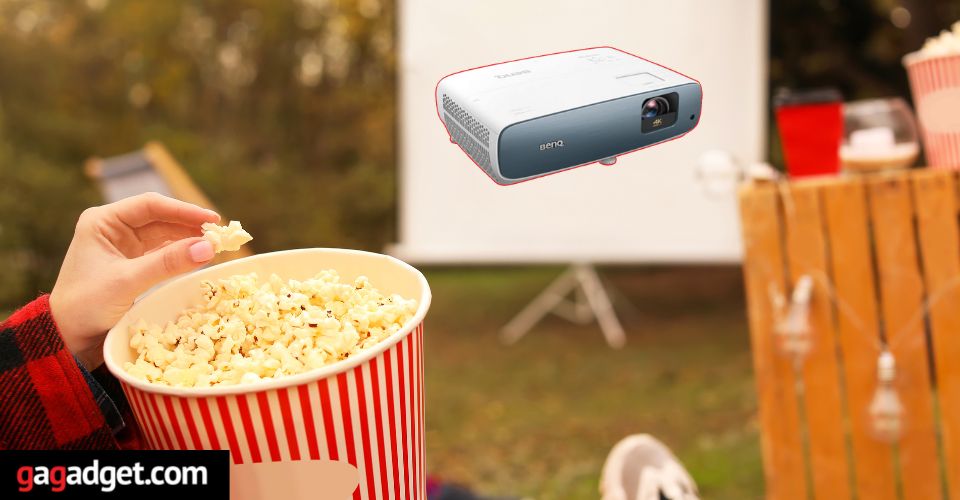
Now, let's explore the commonly asked questions regarding daytime projection conditions.
Why do lumens matter for daylight viewing?
Lumens refer to a projector's brightness. For daylight viewing, high lumens are essential to counteract the ambient light, ensuring a clear, bright image.
How many lumens are needed for daylight projector use?
Typically, for a projector to be effective in daylight, you'd need at least 3,000 lumens. However, this may vary depending on the specific conditions and the size of the image you're projecting.
How does sunlight impact a projector's visibility?
Sunlight can wash out the projected image, making it less visible. The brighter the sunlight, the harder it is for the projected image to compete, which is why a projector with a high lumen count is recommended for daylight use.
Tips to enhance projector brightness during the day?
To boost projector brightness, consider using a higher-lumen projector, adjusting the projector settings, using a screen designed for daylight viewing, or positioning the screen away from direct sunlight. These strategies can help maximize image visibility.
Can projectors work effectively in daytime outdoors?
Yes, projectors can be used outdoors during the day. However, factors such as the projector's lumen count, screen material, and positioning away from direct sunlight can greatly affect the viewing experience.
Is there a lumen-ambient light rule for projectors?
Generally, the brighter the ambient light, the higher the lumen count required for clear visibility. For instance, in a dimly lit room, 1,000 to 2,000 lumens may suffice, while in a brightly lit room, 3,000 or more lumens may be needed.
Does sunlight's color temperature affect projector viewing?
Yes, the color temperature of sunlight can impact the perceived colors of a projected image. Sunlight has a high color temperature, which may make the image appear bluish. Adjusting the projector's color balance can help mitigate this effect.
Are any projectors specifically built for daylight use?
Yes, there are projectors specifically designed for daylight use, often featuring high lumen counts, enhanced contrast ratios, and specialized screen technologies to ensure clear, vivid images even in bright environments.
Can projector angle improve daylight visibility?
Absolutely! Positioning the projector screen at an angle where it receives less direct sunlight can significantly improve visibility. Moreover, angling the projector correctly can also reduce potential glare and reflections.
The best projector lamp for daylight conditions?
In daylight conditions, the best projector lamp would be one that offers high brightness, usually indicated by high lumens. Look for lamps used in projectors with at least 3,000 lumens for the best daylight performance.
Summary: Daylight Projector for Home
We've explored a diverse range of projectors suited for daylight use, from budget-friendly models to high-end ones costing several thousand dollars. We've delved into options that perform admirably on overcast days and those that can withstand even the brightest sunny conditions.
Ultimately, the choice boils down to your specific needs and preferences. Realistically, no projector is designed to thrive in daylight, and any measure to minimize ambient light will significantly improve your viewing experience. Nevertheless, my curated selection includes some excellent options, tailored to various price points.
- Best Overall Model - BenQ TK850i
- Great Alternative Model - Epson Pro EX7280
- Best Affordable Model - ViewSonic PA503X
I sincerely hope my guide has been insightful. I welcome your thoughts, feedback, or any suggestions you might have. Please feel free to share them in the comments section below. Thanks for your time, and happy viewing!
Go Deeper:
